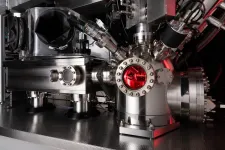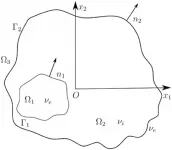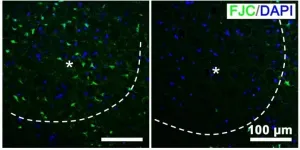(Press-News.org) Turns out the old adage, "monkey see, monkey do," does ring true -- even when it comes to cannabis use. However, when cannabis use involves youth it's see, think, then do, says a team of UBC Okanagan researchers.
The team found that kids who grow up in homes where parents consume cannabis will more than likely use it themselves. Parental influence on the use of cannabis is important to study as it can help with the development of effective prevention programs, explains Maya Pilin, a doctoral psychology student in the Irving K. Barber Faculty of Arts and Social Sciences.
"Adolescence is a critical period in which drug and alcohol experimentation takes place and when cannabis use is often initiated," says Pilin. "Parents are perhaps the most influential socializing agent for children and early adolescents."
Pilin says it has long been assumed that parental use of cannabis contributes to higher levels of adolescent use. However, while there has been research about parental use of alcohol and whether their children drink, there is less known about pathways to cannabis use.
"What we found mirrors closely what has been found in past research with alcohol use -- that parental use influences adolescents' use as well," she says.
For their research, the team used data from a survey of almost 700 students in Grades 7 to 9, which is when previous studies demonstrate that cannabis use increases dramatically. Each year over a three-year period, the students were asked if one or both of their parents used cannabis, if so, how frequently and whether they also use it. As the students aged, their cannabis use began and increased.
This data was collected before cannabis was decriminalized in Canada in 2017.
"We wanted to try and explain, how parental use, while their kids were in Grade 7, would be associated with their kids' use by ninth grade," says Dr. Sarah Dow-Fleisner, a researcher with the School of Social Work. "We hypothesized that early parental use would impact how teens think about cannabis use, in particular whether parental use early in adolescence would be associated with more positive expectations and perceptions of cannabis use by Grade 8, and whether that would lead to an increased chance of using cannabis by Grade 9. What we thought is exactly what we found."
UBCO Psychology Professor Dr. Marvin Krank funded the research and collected the data for the study in collaboration with Okanagan valley school districts.
"This work is an important extension of previous studies about how parents influence their children's cannabis use in subtle ways," he says. "Children of parents who use cannabis have more associations and positive thoughts that quickly come to mind in response to cues associated with cannabis use. Such quick and automatic thinking influences their choices often without their awareness."
Analyzing parental and then subsequent teen use of cannabis can provide important information in terms of intervention. Effective interventions need to consider the way youth think about cannabis use and how that has been shaped by parents, says Pilin.
Understanding the reasons for early cannabis use is essential to developing effective prevention programs in these formative years, explains Dr. Dow-Fleisner, as early use of cannabis is associated with harmful effects on mental and social developmental outcomes. It also increases the chance of experimentation with other drugs and greatly increases the risk of being diagnosed with a substance-use disorder in adulthood.
"What is important is that we do see across the literature that parent use and experiences with cannabis in early adolescence are linked with cannabis use later in adolescence, and part of this relationship has to do with the way teens think about cannabis," she adds. "It helps us think about ways to intervene and prevent cannabis use -- our interventions must address how youth think about substance use based on their familial and personal experiences."
INFORMATION:
The research, funded by grants from the Social Sciences and Humanities Research Council of Canada and the Canadian Institutes of Health Research, was published recently in Addictive Behaviors.
People with bipolar disorder may not take their medication because of side effects, fear of addiction and a preference for alternative treatment - according to research from Norfolk and Suffolk NHS Foundation Trust (NSFT) and the University of East Anglia (UEA).
Nearly half of people with bipolar disorder do not take their medication as prescribed leading to relapse, hospitalisation, and increased risk of suicide.
A new study, published today, reveals six key factors that stop people taking their medication as prescribed.
These include whether they are experiencing side effects, difficulties in remembering to take medication and a lack of support from family, friends and healthcare ...
Researchers at the University of Eastern Finland have found a potential neuroprotective effect of a protein modification that could be a therapeutic target in early Alzheimer's disease. The new study investigated the role of MECP2, a regulator of gene expression, in Alzheimer's disease related processes in brain cells. The study found that phosphorylation of MECP2 protein at a specific amino acid decreases in the brain as Alzheimer's disease is progressing. Abolishing this phosphorylation of MECP2 in cultured mouse neurons upon inflammatory stimulation enhanced their viability and ...
A study led by MedUni Vienna (Institute of Cancer Research and Comprehensive Cancer Center Vienna) sheds light on the mechanisms that lead to extremely aggressive metastasis in a particular type of pancreatic cancer, the basal subtype of ductal adenocarcinoma. The results contribute to a better understanding of the disease. The study has recently been published in the leading journal "Gut".
The most prevalent form of pancreatic cancer, Pancreatic Ductal AdenoCarcinoma (PDAC) is usually divided into two subtypes, a classical subtype and a basal subtype. The latter is highly aggressive and tends towards early metastasis. One of the distinguishing features between the two subtypes is that the classical subtype exhibits the protein GATA6. This is no longer present ...
Water in the high-mountain regions has many faces. Frozen in the ground, it is like a cement foundation that keeps slopes stable. Glacial ice and snow supply the rivers and thus the foothills with water for drinking and agriculture during the melt season. Intense downpours with flash floods and landslides, on the other hand, pose a life-threatening risk to people in the valleys. The subsoil with its ability to store water therefore plays an existential role in mountainous regions.
But how can we determine how empty or full the soil reservoir is in areas that are difficult to access? Researchers at the German Research Centre for Geosciences (GFZ), together with colleagues from Nepal, have now demonstrated an elegant method to track groundwater dynamics in high ...
The latest findings show that with clever science, a single fingerprint left at a crime scene could be used to determine whether someone has touched or ingested class A drugs.
In a paper published in Royal Society of Chemistry's Analyst journal, a team of researchers at the University of Surrey, in collaboration with the National Centre of Excellence in Mass Spectrometry Imaging at the National Physical Laboratory (NPL) and Ionoptika Ltd reveal how they have been able to identify the differences between the fingerprints of people who touched cocaine compared with those who have ingested the drug - even if the hands are not washed. The smart science behind the advance is the mass spectrometry imaging tools applied to the detection of cocaine ...
Problems for eigenmodes of a two-layered dielectric microcavity have become widespread thanks to the research of A.I. Nosich, E.I. Smotrova, S.V. Boriskina and others since the beginning of the 21st century. The KFU team first tackled this topic in 2014; undergraduates started working under the guidance of Evgeny Karchevsky, Professor of the Department of Applied Mathematics of the Institute of Computational Mathematics and Information Technology.
In this paper, the researchers discuss a model of a 2D active microcavity with a piercing hole and the possibility of a compromise between high directionality of radiation ...
The last ice age ended almost 12 000 years ago in Norway. The land rebounded slowly as the weight of the ice disappeared and the land uplift caused many bays to become narrower and form lakes.
Fish became trapped in these lakes.
Sticklebacks managed to adapt when saltwater became freshwater, and they can still be found in today's coastal lakes along the Norwegian coast.
Saltwater gradually changed to brackish water and later to freshwater. This environmental change naturally led to a total replacement of the animal and plant life.
The exception is the tiny stickleback, which successfully adapted as saltwater became freshwater and ...
A reason for these findings could be due to the fact that Parkinson's patients often also have many risk factors for a severe course of Covid-19. For the first time, the cross-sectional study provides detailed nationwide data. The research team led by Professor Lars Tönges reports in the journal Movement Disorders of 4 May 2021.
Nationwide analysis of hospital data
The team headed by Lars Tönges has analysed data on Parkinson's treatment in 1,468 hospitals. The data were taken from nationwide databases in which information on the treated diseases and of treatments carried out in hospitals is publicly collected, for example by the Institute for the Hospital Remuneration System or the Federal Statistical Office.
A comparison between the period of the first ...
Blocked blood vessels in the brains of stroke patients prevent oxygen-rich blood from getting to cells, causing severe damage. Plants and some microbes produce oxygen through photosynthesis. What if there was a way to make photosynthesis happen in the brains of patients? Now, researchers reporting in ACS' Nano Letters have done just that in cells and in mice, using blue-green algae and special nanoparticles, in a proof-of-concept demonstration.
Strokes result in the deaths of 5 million people worldwide every year, according to the World Health Organization. Millions more survive, but they often experience disabilities, such as difficulties with speech, swallowing or memory. The most common cause is a blood vessel blockage in the brain, and the best way to ...
WASHINGTON, DC (May 19, 2021) - Human genetics and genomics contributed $265 billion to the U.S. economy in 2019 and has the potential to drive significant further growth given major new areas of application, according to a new report issued today by the American Society of Human Genetics (ASHG). The findings indicate that this research and industry sector has seen its annual impact on the U.S. economy grow five-fold in the last decade and outlined at least eight areas of expanding impact for human health and society. ASHG commissioned and funded the report and is grateful for generous additional contributions from Invitae and Regeneron. ...






